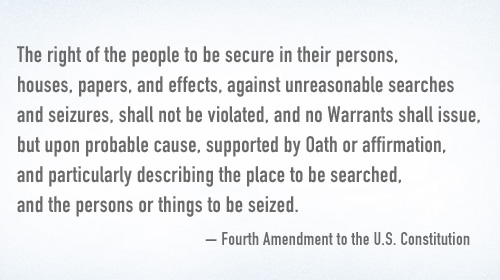
Immigration and Customs Enforcement (ICE) claims that its recently announced is a major step toward āsmarter immigration enforcement,ā and it seems to have convinced some that thatās true. But serious problems remain.
First, what are immigration ādetainers?ā They are the paper forms that immigration officials send to local and state law enforcement agencies, asking them to imprison a person in their custody for an extra 2 to 5 days beyond the time when he or she should be released, giving the immigration officials extra time to decide whether to take him or her into federal custody.
Normally, the government needs to get a warrant or bring you in front of a judge before it can put you in jail, right? Thatās how the Fourth Amendment usually worksābut thatās not what happens in immigration land. For years, ICE has been issuing detainers based solely on the fact that it has initiated an investigationā to determine whether a person is subject to deportation. In other words, the federal government has been asking local and state agencies to detain peopleāwithout a warrant, without probable cause, and without a hearing or a judgeās approvalāmerely because a federal immigration official somewhere has started looking into whether the person might be a non-citizen ICE could try to deport. As California Attorney General Kamala Harris noted in a recent memorandum, that is a far cry from the āā usually required to lock someone up.
As you might expect, given ICEās ādetain first, investigate laterā approach, immigration detainers have caused countless people to be held in jail unlawfullyāincluding . ICEās detainer practices are the subject of ongoing litigation across the country, including several cases brought by the and other .
Take Ernesto Galarza, for example. A U.S. citizen born in New Jersey, Mr. Galarza was at work one day in 2008 when he was mistakenly swept up in a series of drug arrests aimed at a contractor working at his job site. (Mr. Galarza was later acquitted of any wrongdoing). At the time of his arrest, Mr. Galarza had his Pennsylvania driverās license and Social Security Card in his wallet, and told the police that he was born in New Jersey. Yet a local police detective nevertheless reported his arrest to ICE, saying she suspected him to be an undocumented immigrantāa suspicion that, Mr. Galarza alleged, was motivated by race. (In March 2012, a federal district court permitted Mr. Galarza's equal protection claim to proceed over the defendantās objections; that claim has since been settled). Acting on this vague and racially motivated tip, and without any reliable basis for believing that he was actually a non-citizen, ICE issued a detainer, causing Mr. Galarza to be held in jail for an extra three days before the mistake was discovered.
Evidently, ICE has decided it can no longer defend these practices. On the , the words āinitiated an investigationā have been deleted; the form now states that there is āreason to believeā the person might be subject to deportation.
What does this change in wording mean? Courts have made clear that āreason to believeā in the immigration context means the same thing as āāāthe evidentiary standard required by the Fourth Amendment before someone can be arrested. In theory, this means that ICE must do an actual investigation and have concrete, individualized evidence that a person is deportable before it can issue a detainer.
But the Fourth Amendment has always required this. And yet, for years, ICEās practice has been to ask law enforcement agencies to keep people locked up based on mere suspicion, disregarding the Fourth Amendmentās most basic requirement. Without a serious commitment to institutional reform, thereās no reason to think ICE officials are going to change that practice now, just because the pre-printed words on the detainer form have changed.
Whatās more, the Fourth Amendment requires more than just probable cause to put someone in jail. It also requires judicial approval, either before the arrest (in the form of a warrant) or soon afterward (in the form of a judicial hearing within 48 hours). People who are imprisoned on immigration detainers get neither of these things. ICEās new detainer guidance does nothing to address these Fourth Amendment deficiencies. Without fixing these problems, ICE is ensuring that unconstitutional imprisonment will continue to be the norm.
Finally, as other commentators have noted, the new detainer guidance ā.ā And unlike some of the state and local limited detainer policies that have been proposed or adopted around the country, such as , ICEās new guidance will continue causing the unnecessary imprisonment of people who pose no public safety threat and have no criminal history at allāincluding people who are merely charged with certain crimes but never convicted, like Mr. Galarza.
Weāre still waiting for real detainer reform. ICEās recent announcement wasnāt it.
Learn more about ICE abuses: Sign up for breaking news alerts, , and .
